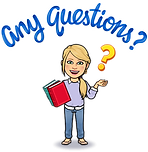Exponents and Scientific Notation: Unlocking the Power of Numbers!
Welcome to this exciting learning module on exponents and scientific notation! In this unit, you’ll explore the fascinating world of exponents, learning how to simplify expressions using exponent rules and apply them to real-world situations. You’ll also discover how to write and manipulate very large and very small numbers using scientific notation, making complex calculations easier to handle.
First, we’ll dive into the key exponent rules you need to know, including:
-
Product of Powers Rule: How to simplify when multiplying powers with the same base.
-
Power of a Power: How to simplify expressions with powers.
-
Quotient Rule: How to handle division of powers with the same base.
-
Power of a Product: How to deal with powers of products.
-
Zero Exponent Rule: What happens when an exponent is zero.
-
Negative Exponent Rule: How negative exponents work and what they mean.
Next, we’ll explore how to write values in scientific notation, a system that helps us express extremely large or small numbers more easily. You’ll also learn how to convert between standard form and scientific notation and how to perform operations such as addition, subtraction, multiplication, and division with numbers in scientific notation.
By the end of this module, you’ll be able to confidently apply exponent rules, simplify expressions, and work with numbers in scientific notation. Whether you're calculating distances in space or analyzing tiny measurements in science, this module will equip you with the tools to make sense of these numbers and solve problems with ease. Let's get started and unlock the power of exponents and scientific notation!
Exponents Lesson
Lesson Objective: By the end of this lesson, students will be able to write and evaluate expressions involving integer exponents.
Essential Question: How can you write and evaluate expressions with exponents?
Product of Powers Property Lesson
Lesson Objective: By the end of this lesson, students will be able to multiply powers with the same base, apply the power of a power rule, and simplify expressions involving the power of a product. They will develop the skills to work with exponents in different contexts and solve problems involving these exponent rules.
Essential Question: How can you use what you know about powers to find the product of powers?
Check for Understanding: Test your understanding with these end-of-lesson practice problems to reinforce your skills and master the concept!
Quotient of Powers Property Lesson
Lesson Objective: By the end of this lesson, students will be able to divide powers with the same base and simplify expressions involving the quotient of powers. They will practice evaluating expressions with exponents, applying the appropriate rules to simplify and solve problems effectively.
Essential Question: How can you use what you know about powers to find the quotient of powers?
Zero Exponents Lesson
Lesson Objective: By the end of this lesson, students will be able to apply the zero exponent rule, learning that any nonzero number raised to the power of zero equals one. They will simplify expressions involving zero exponents and use this rule to solve problems involving exponents.
Essential Question: Why does any number raised to the power of zero equal one?
Negative Exponents Lesson
Lesson Objective: By the end of this lesson, students will be able to evaluate expressions involving negative integer exponents.
Essential Question: How can you rewrite a power with negative exponents using only positive exponents?
Check for Understanding: Test your understanding with these end-of-lesson practice problems to reinforce your skills and master the concept!
Cooperative Learning Tasks
Scientific Notation Lesson
Lesson Objective: By the end of this lesson, students will be able to write numbers using scientific notation and determine how many times greater one quantity is than another by comparing numbers in scientific notation.
Essential Question: How can you determine if a number written in scientific notation represents a very large or a very small quantity?
Check for Understanding: Test your understanding with these end-of-lesson practice problems to reinforce your skills and master the concept!
Operations with Scientific Notation Lesson
Lesson Objective: By the end of this lesson, students will be able to interpret scientific notation generated by technology, convert values between scientific notation and standard form, and perform operations with numbers written in scientific notation.
Essential Question: How can you apply exponent rules to perform operations with numbers written in scientific notation?
Check for Understanding: Test your understanding with these end-of-lesson practice problems to reinforce your skills and master the concept!








.jpg)






